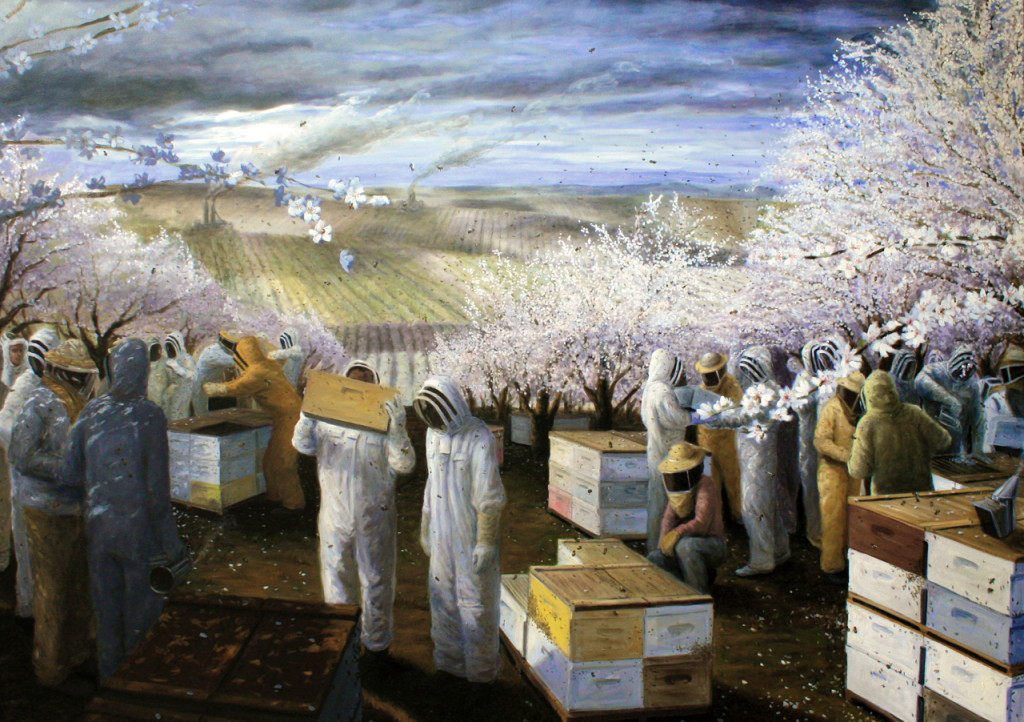
Monoculture Pollination
oil on canvas
60″ x 84″
2012
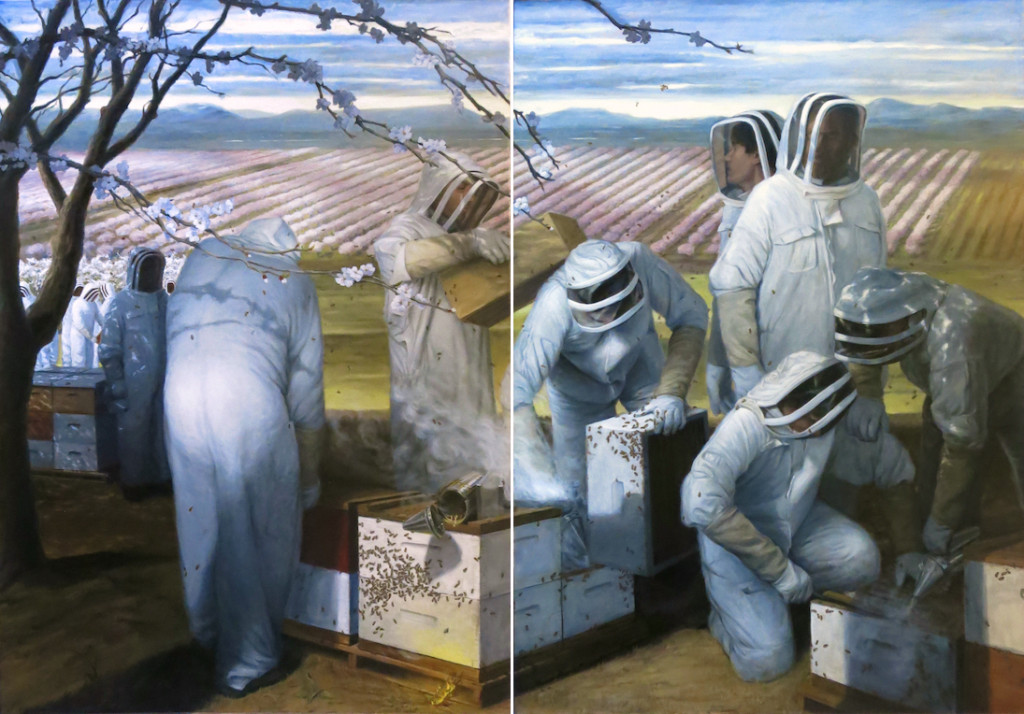
Almond Bloom
oil on canvas
84″ x 120″
2014
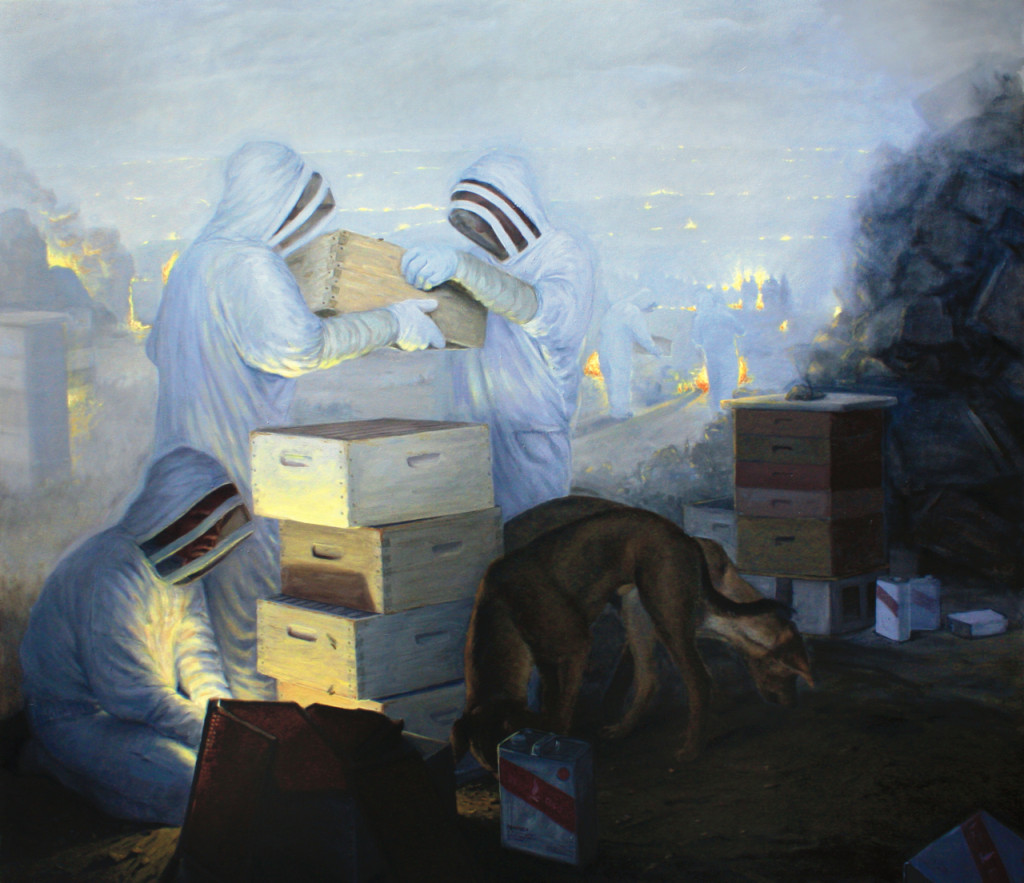
American Foulbrood 2
oil on canvas
50″ x 52″
2012
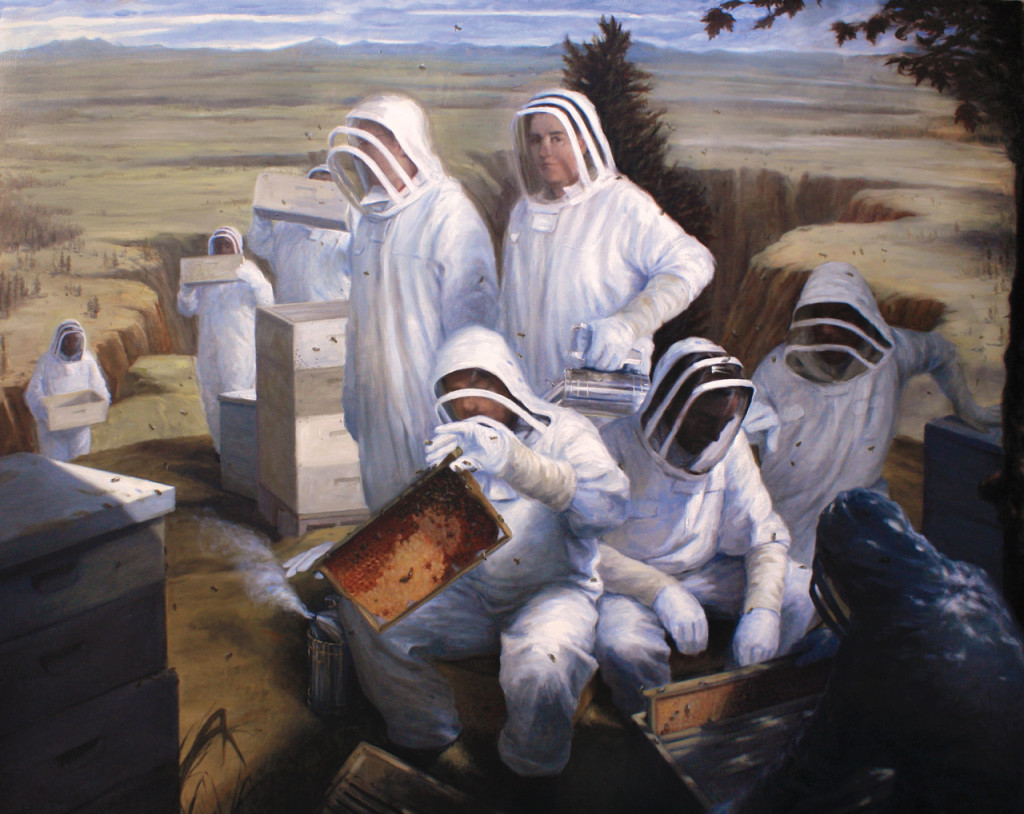
Beekeepers
oil on canvas
64″ x 80″
2012
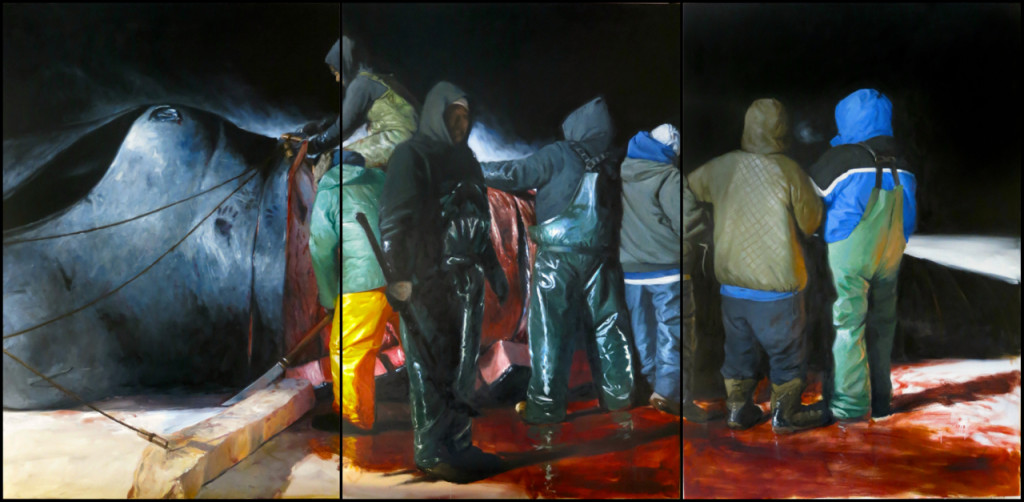
The Whale as a Dish, Fall Hunt
oil on canvas
180″ x 88″
2015
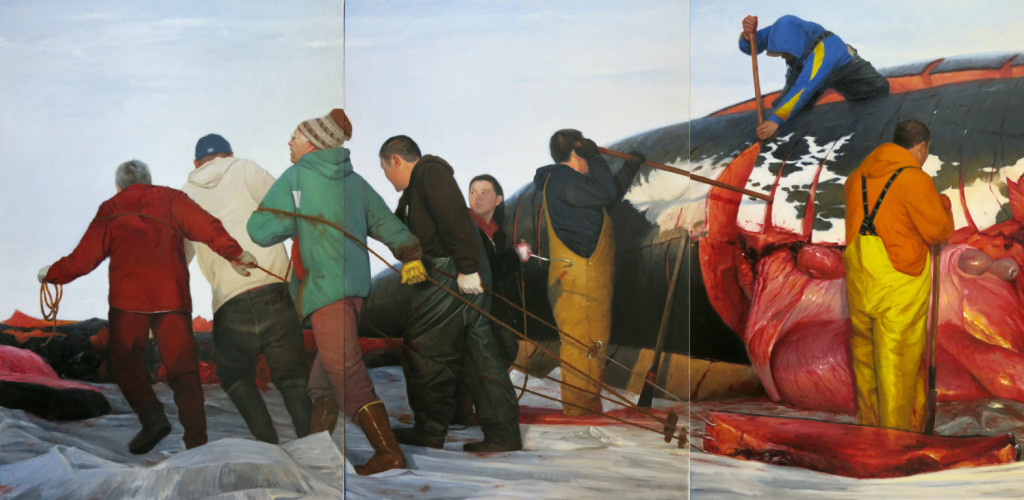
The Whale as a Dish, Spring Hunt
oil on canvas
180″ x 88″
2014
Interview with DAVID PETTIBONE:
Your childhood ambition:
It seems, as a child, we are full of ambitions that have little rhyme or reason. When I was very young, I set up my herpetologist office (cardboard box) out on the driveway and tried charging people a nickel for snake facts. I also entertained priesthood when my grandfather died. Several times, I attempted to build a flying craft and even convinced myself and my 5th grade class that I would make a hovercraft for the science fair. (I ended up comparing the sugar content of cereals.) But, relative to becoming an artist, I do recall thinking that I wanted to be “better” than Picasso. At a young age, the notion of “better” does not seem nearly as convoluted as it does now. Better than Picasso at what? Now, as a professional artist, I can thankfully say that I no longer want to be better than any other artist because that would entail me making their work and I am not interested in that.
Something you treasure:
Nature. Growing up, our house was up against a small mountain in the desert. I spent a significant part of my childhood climbing the rocks and crawling through crevasses. I always knew that wilderness was important to me, wilderness as Place—as somewhere I could go to and exist in. I moved to Providence, RI for college and then eventually New York City but I never felt like I was home. Fifteen years later, a friend accused me of fetishizing Place with a capital P. I decided to embrace that and so I moved to Alaska. Now, I live against a mountain again, this time in a spruce forest, and with a view of the tallest mountain peak in North America.
Your worst habit:
I doubt you’ll get people to tell you their worst habit, but a bad habit for me would be Instagram. I used to be terrible at staying on top of social media. When I left New York, I made a conscious effort to maintain an active Instagram account so as not to disappear from New York altogether. But it can be addictive—I’ve never had that problem before. The other day I found myself thinking as if my thoughts were an Instagram post. It was terrible.
The aspect of your work that’s most important to you:
The best compliment I think I’ve ever received about my work was that it felt genuine. It is important to me that concept and technique come about organically and intrinsically as opposed to shaped by outside forces. For example, I love painterly and brushstroke-y. I love looking at paintings where a cheek is a big smear of buttery, dripping paint. But I could never do this in my own work simply to do it. There has to be a reason and that reason needs to come to fruition naturally and not forced- in support of a larger whole and not as an aside. Actually, several paintings from my current series are rather painterly—but that has nothing to do with style and everything to do with the fact that I am painting outside in below freezing temperatures with three layers of gloves. If the drip or the stroke fits into the larger whole, I keep it. At a relatively early point in the development of a painting, the painting takes over and tells me what it needs, not the other way around.
Your first job:
My first real job was working at a furniture “factory” in Phoenix the summer of my freshman year of college. I was the only one that didn’t speak Spanish (despite my 2 years of high school Spanish) and we were all making $5.25 an hour. My job was to stain the furniture. After three or four dips into the vat of chemicals with a rag, the latex gloves would begin to fall apart. I remember going to see my manager about the problem and her telling me that I should just wear extra layers of gloves. She was the interim manager while the previous manager was in the hospital due to stomach pains. It was a pretty terrible place and I felt incredibly guilty because, unlike most of the other people there, I had the luxury of knowing I was leaving once the summer was over to go back to school. I’m pretty sure that place no longer exists.
Someone whose work you highly recommend:
Working as an artist in New York City for any significant amount of time, you come to make friends with plenty of other artists who are far more talented than you, far more insightful. A few artists I admire are Allison Maletz, Thomas Walton, Karl Koett, Michael Sherman, Alexandro Barrios and Austin Parkhill.
See more of David Pettibone’s work here.